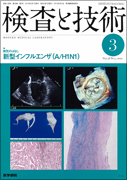1) Sebastian SU, Schnitzler P:An update swine-origin on influenza virus A/H1N1:a review. Virus Genes 39:279-292,2009
2) 谷口青洲:パンデミック(H1N1)2009の現状と今後の対策.小児科診療 62:2149-2155,2009
3) European Centre for Disease Prevention and Control:ECDC INTERIM RISK ASSESSMENT,2009 http://ecdc.europa.eu/en/files/pdf/Health_topics/090720_Influenza_A(HINI)_Risk_Assessment.pdf
4) Ito Y, Shinya K, Kiso M, et al:In vitro and in vivo characterization of new swine-origin H1N1 influenza viruses. Nature 460:1021-1025,2009
5) 厚生労働省:新型インフルエンザ患者国内発生について.2009年12月24日 http://www.mhlw.go.jp/kinkyu/kenkou/influenza/houdou/2009/12/dl/infuh1224-01.pdf
6) Crum-Cianflone NF, Blair PJ, Faix D, et al:Clinical and epidemiologic characteristics of an outbreak of novel H1N1 (swine origin) influenza A virus among United States military beneficiaries. Clin Infect Dis 49:1801-1810,2009
7) Li IW, Hung FN, To KK, et al:The natural viral load profile of patients with pandemic swine-origin influenza A H1N1 2009 (pH1N1) and the effect of oseltamivir treatment. Chest:Published Online January 8, 2010
8) Updated Interim Recommendations for the Use of Antiviral Medications in the Treatment and Prevention of Influenza for the 2009-2010 Season.Centers for Disease Control and Prevention. September 8, 2009

